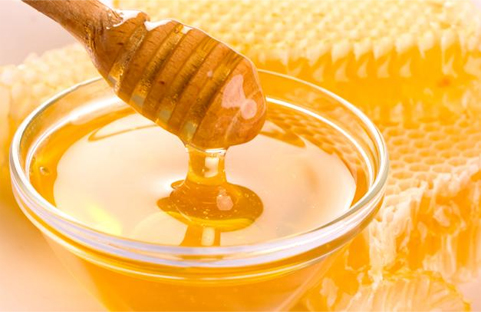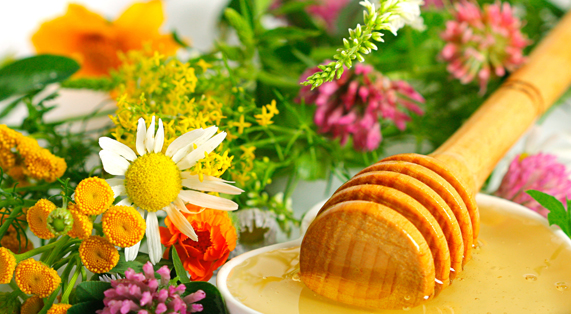النشاط المضاد للبكتيريا للعينات صمغ النحل من مناطق جغرافية مختلفة من تركيا ضد اثنين من مسببات الأمراض المنقولة عن طريق الأغذية، السالمونيلا إنتيريتيديس والليستيريا مونويتوجينيسAntibacterial activity of bee propolis samples from diff erent geographical regions of Turkey against two foodborne pathogens, Salmonella Enteritidis and Listeria monocytogenes
النشاط المضاد للبكتيريا للعينات صمغ النحل من مناطق جغرافية مختلفة من تركيا ضد اثنين من مسببات الأمراض المنقولة عن طريق الأغذية، السالمونيلا إنتيريتيديس والليستيريا مونويتوجينيس
Antibacterial activity of bee propolis samples from diff erent
geographical regions of Turkey against two foodborne
pathogens, Salmonella Enteritidis and Listeria monocytogenes
Ayhan TEMİZ, Ayla ŞENER, Aslı ÖZKÖK TÜYLÜ, Kadriye SORKUN, Bekir SALİH
Antibacterial activity of bee propolis samples from diff erent
ملخص
وكان الهدف من هذه الدراسة هو التحقيق في الأنشطة المضادة للبكتيريا من 25 عينات صمغ النحل جمعت من مناطق جغرافية مختلفة من تركيا ضد 2 مسببات الأمراض التي تنقلها الأغذية، السالمونيلا إنتيريتيديس أتسك 13076 و
الليستيريا مونوسيتوجينس أتك 1462. ث التركيبات الكيميائية من مقتطفات الكحول الإيثيلي من عينات صمغ النحل (إيب)
تم تحديدها من قبل اللوني الغاز إلى جانب مطياف الكتلة. المكونات الرئيسية للعينات إيب كانت فلونويدات فل، واسترات حمض العطرية، والكحول العطرية، والأحماض العطرية، والأحماض الكربوكسيلية الأليفاتية، تربنس، والأليفاتية استرات حمض الكربوكسيلية. تم اختبار الأنشطة المضادة للبكتيريا لعينات إيب في 2 التخفيفات المختلفة من 1:10 و 1: 100
(ت / ت). وأظهرت جميع العينات صمغ النحل إيب في التخفيف 1:10 عالية النشاط المضاد للبكتيريا ضد سلالات اختبار بكتيريا وليس قابلة للحياة تم تحديد البكتيريا بعد حضانة إيه. تم العثور على سلالة إنتريتيديس ثي S. أن تكون مقاومة للعينات إيب في 1: 100 نسب التخفيف. ومع ذلك، فإن معظم إيب عند 1: 100 نسب التخفيف كان نشاط مضاد للجراثيم عالية ضد L. مونوسيتوينس سلالة. في حين أن بعض من إيب في 1: 100 نسب التخفيف قتل جميع الخلايا القابلة للحياة من المستوحدة L.، بعض إيب نفذت 1-6 تخفيضات سجل في الخلايا القابلة للحياة من هذه السلالة. نشاط مضاد للبكتيريا من صمغ النحل يعتمد على المادة الكيميائية وتكوين وأنواع البكتيريا. كان لعينات د بروبوليس عمل مضاد للجراثيم ملحوظ ضد سلالة إيجابية الجرام ونشاط محدود ضد واحدة سلبية الجرام اعتمادا على تركيز إيب
Abstract: Th e aim of the present study was to investigate the antibacterial activities of 25 propolis samples collected
from various geographical regions of Turkey against 2 food-borne pathogens, Salmonella Enteritidis ATCC 13076 and
Listeria monocytogenes ATCC 1462. Th e chemical compositions of ethyl alcohol extracts of the propolis (EEP) samples
were determined by gas chromatography coupled to mass spectrometry. Th e main components of EEP samples were
fl avonoids, aromatic acid esters, aromatic alcohols, aromatic acids, aliphatic carboxylic acids, terpens, and aliphatic
carboxylic acid esters. Antibacterial activities of the EEP samples were tested at 2 diff erent dilutions of 1:10 and 1:100
(v/v). All EEP samples at 1:10 dilution showed high antibacterial activity against the test bacterial strains and no viable
bacteria were determined aft er incubation. Th e S. Enteritidis strain was found to be resistant toward EEP samples at
1:100 dilution ratios. However, most of the EEP at 1:100 dilution ratios had high antibacterial activity against the L.
monocytogenes strain. While some of EEP at 1:100 dilution ratios killed all viable cells of L. monocytogenes, some EEP
carried out 1-6 log reductions in the viable cells of this strain. Antibacterial activity of propolis depends on the chemical
composition and types of bacteria. Th e propolis samples had a marked antibacterial action against the gram-positive
strain and limited activity against gram-negative one depending on EEP concentration.
Key words: Propolis, antibacterial activity, food pathogens, Salmonella Enteritidis, Listeria monocytogenes




